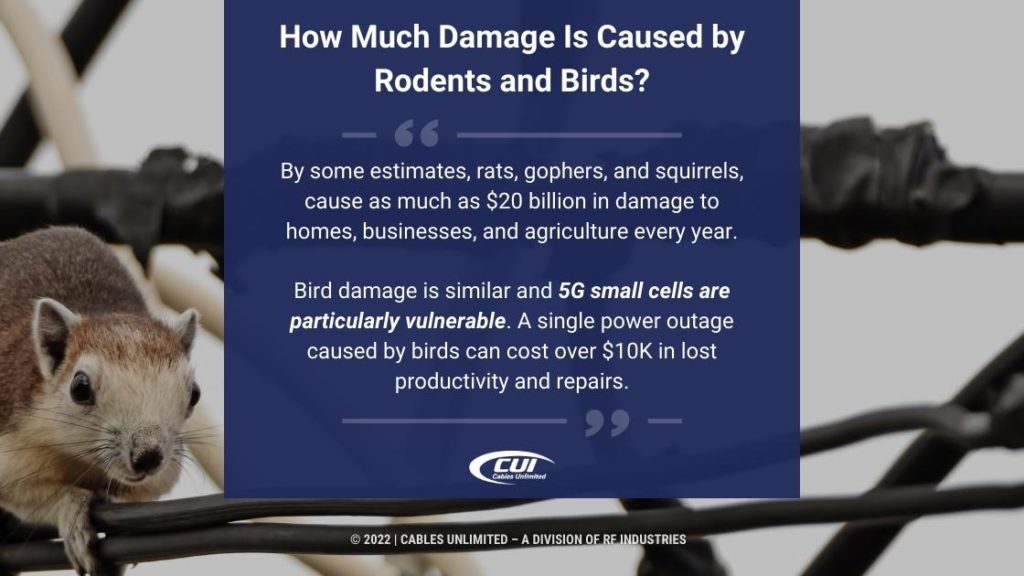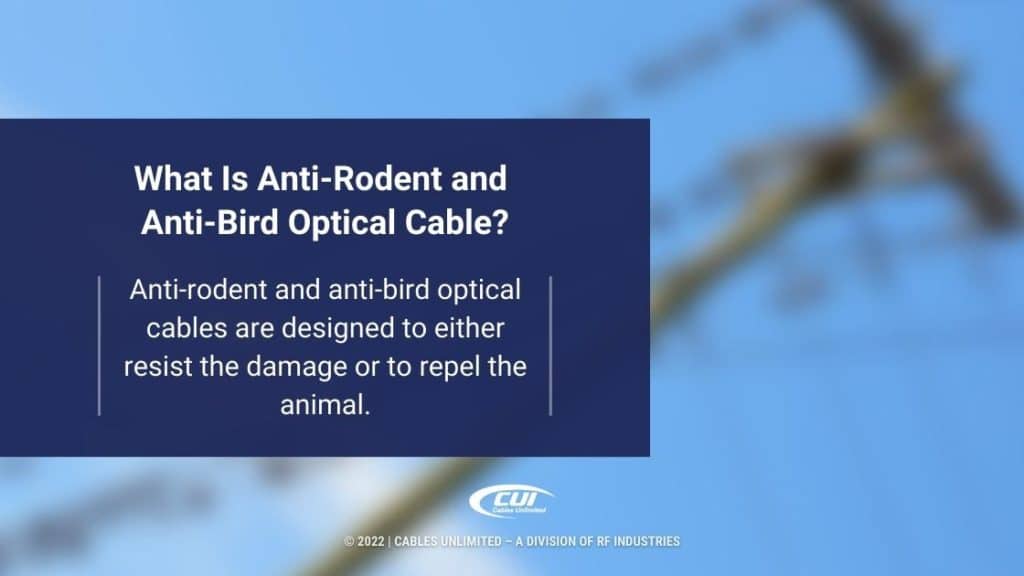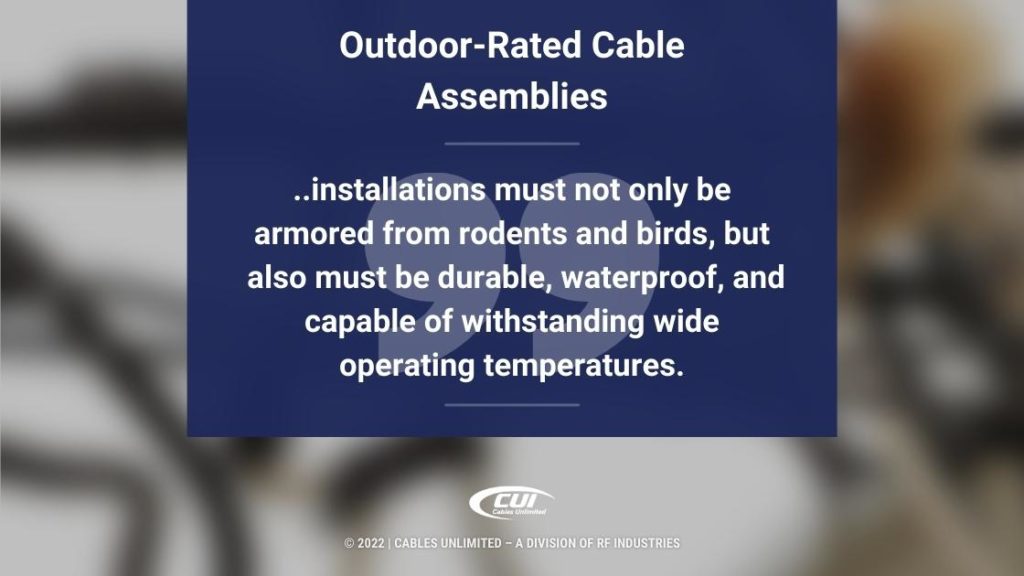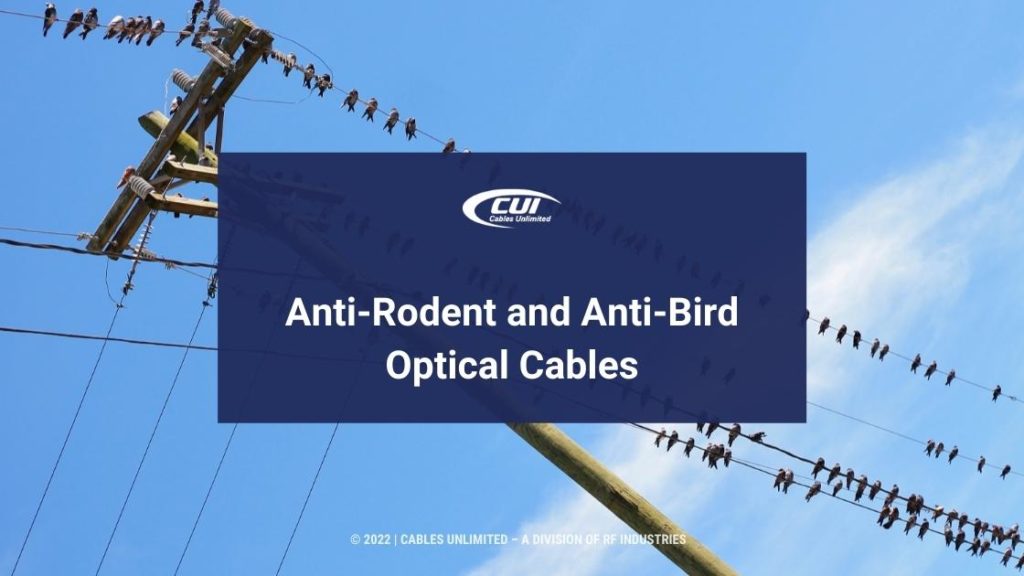Fiber optic cables are installed nearly everywhere. Not only are they buried underground for extensive communication networks, but they are also a part of every cell tower and particularly small cell network installations. That exposes them to all sorts of critters, all seeking to find their way in, resulting in serious damage as they search for food. The solution is anti-rodent and anti-bird optical cables.
In this article, we review the key methods of protecting optical cables to ensure that animals don’t bring down communication systems.

How Much Damage Is Caused by Rodents and Birds?
Rats, gophers, and squirrels grind their teeth on anything that comes to hand. It’s part of their nature. But by some estimates, it costs as much as $20 billion in damage to homes, businesses, and agriculture every year. That damage hits wiring and is considered the source of many electrical fires. It also hits telecommunication centers and cabling, causing phone and internet shutdowns.
Bird damage is somewhat similar, hitting crops primarily, but also damaging power lines. 5G small cells located throughout a community on light poles, etc. are particularly vulnerable. As just one example, it’s estimated that a single power outage caused by birds can easily cost over $10,000 in lost productivity and repairs.

What Are Anti-Rodent and Anti-Bird Optical Cables?
Anti-rodent and anti-bird optical cables are designed to either resist the damage or to repel the animal. Here are the methods currently used to prevent damage.
- Cable Diameter. If the outer diameter is large enough, the rodent won’t be able to get its jaws around it. It’s the size alone that discourages gnawing the cable.
- Steel Tape Armor. The next line of defense, underneath the cable sheath, are several armoring options. Steel tape armoring uses thin steel tape running the length of the cable. It is usually corrugated to allow improved flex to the cable. There can also be two layers of tape to add still more protection. Steel tape is lighter than the next option, steel wire armor.
- Steel Wire Armor. This armoring is applied between the inner and outer sheath of the cable. It involves winding wire around the cable, which also imparts a high crush factor.
- Steel Braid Armor. This is similar to wire armor but uses thin, soft steel wires formed into a braid. It’s best for small cable diameters and offers high flexibility and ease of installation.
- FRP Armor. Fiberglass-reinforced polymer rigid elements are stranded around the cable, between the outer and inner sheathing. One advantage is that it is non-metallic and, therefore, is immune to induced voltage and lightning.
- Nylon Outer Sheath. The armor protection types above are all considered 100% protection from rodents. On the other hand, a thick outer sheath of Polyamide 12 nylon provides protection from rodents as well as termites, but for less rigorous conditions than armoring. It’s estimated to be around 75% effective.
- Glass Yarns. These wrap around the cable and, while not preventing gnawing, it makes it exceedingly unpleasant. As a result, it’s more of a discouragement to the rodents than an out-and-out preventative.
- Chemical Repellents. The typical additive is capsaicin, which is an irritant that causes a burning sensation for any mammal that comes into contact with it, including humans. This falls into the discouragement category rather than preventative. One downside is that the chemical additives can migrate out of the sheath over time.

Outdoor-Rated Cable Assemblies
All these options are part of the broader set of requirements when considering outdoor-rated cable assemblies. Those installations must not only be armored from rodents and birds, but also must be durable, waterproof, and capable of withstanding wide operating temperatures.
We Can Help
We have all these options available for your custom fiber optic cabling requirements. If you’re at the design stage, we can also provide engineering assistance and prototyping.
If your requirements are already specified and ready for a quote, we are ready to meet your deadlines and pricing targets. Our extensive in-house services and advanced manufacturing capabilities are in place to meet your requirements.
But we offer much more than state-of-the-art manufacturing – our dedicated team is also known for going to great lengths to meet the needs of our customers, including working round-the-clock to meet tight turnaround time requirements.
Our sales representatives are standing by to assist you with product questions and quotes Monday – Friday, 8:00 am to 5:00 pm Eastern. You can also send us an email or complete our contact form and we’ll get right back to you.




